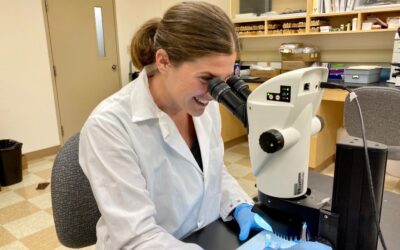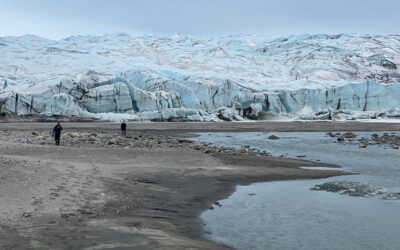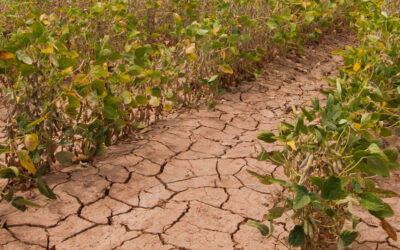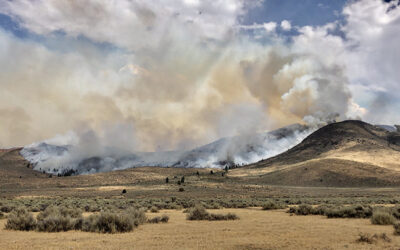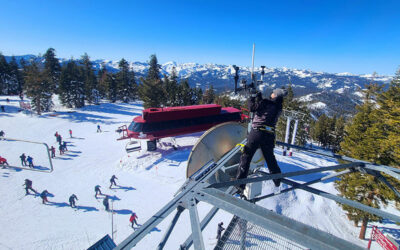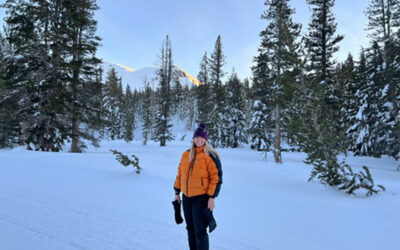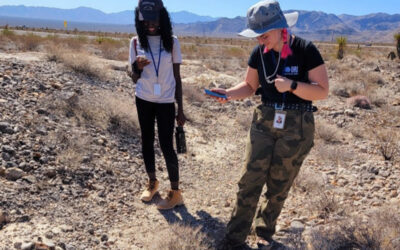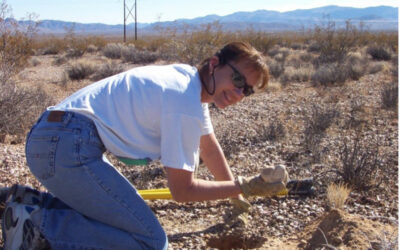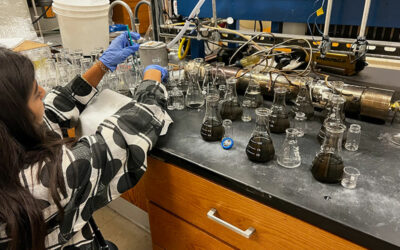Behind the Science Blog
DRI’s “Behind the Science” blog featuring our people and projects
Read the stories below to learn more about the amazing people and projects happening at DRI.
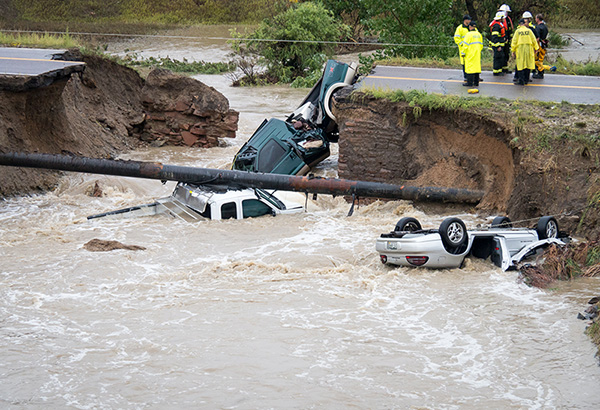
Preparing for the Floods That Follow the Fires
A conversation with Guo Yu and Jeremy Giovando about their new research examining post-fire flood frequency. The study expands on previous frameworks to account for the compounding impacts of repeated wildfires on flood risk, using a southern California watershed as a case study.
NSF Graduate Research Fellowship Awarded to Microplastics Researcher Rachel Kozloski
Rachel Kozloski is a Ph.D. student in Dr. Monica Arienzo’s lab focused on the movement and characteristics of microplastics in ground and surface water.
Field Notes From DRI’s Ice Core Team in Greenland: A Story Map
A team of DRI scientists returned to Greenland in May 2023, where they are drilling a 150m long ice core to study interactions between ice chemistry and microbial life.
A Community-Centered Approach to Air Quality Assessment
Researchers from DRI and UNLV teamed up with a Las Vegas community concerned about a neighboring asphalt plant to measure their air quality.
Come Rain or Shine: Rainwater Harvesting for Food Production in the Face of Drought
Brianda Hernandez Rosales examined the use of rainwater harvesting to support food sovereignty for the Hualapai Indian Reservation.
DRI Student Interns Explore Northern Nevada’s Natural Hazards
In this story, we highlight the work of DRI interns Phillips Nguyen and Alexius Jessup-Raju, two students from Truckee Meadows Community College, as they explore natural hazards and their impacts on house ownership and aquatic environments.
DRI Student Interns Join Efforts to Improve Drinking Water Access in Ghanaian Communities
Braimah Apambire’s student interns studied water and sanitation improvement for Ghanaian communities during the fall 2022 semester.
Making it Snow: A Brief History and Review of the Science Behind Cloud-Seeding
The snow-inducing technique called cloud-seeding has been around for more than 60 years. Although not a panacea for drought-stricken regions, cloud-seeding can increase seasonal precipitation by about 10%. In the Reno area alone, winter cloud-seeding efforts are estimated to add enough water to supply about 40,000 households for a year.
Understanding Rain-on-Snow Events with Anne Heggli
Rain-on-snow events are the focus of DRI’s Anne Heggli, who is studying ways to improve our ability to forecast and prepare for these potentially hazardous storms.
Mary Cablk: Celebrating a Career in Canine Detection, Biology, and Remote Sensing
Mary Cablk retired from DRI after 23 years. Her journey into science began with remote sensing and later pioneered new fields of science.
DRI interns join the search for elusive desert tortoises in Tule Springs Fossil Beds National Monument
Tiffany Pereira’s student interns tracked elusive and threatened desert tortoises in the desert near Las Vegas, Nevada.
Lynn Fenstermaker: Celebrating a Career in Ecological Remote Sensing and NASA Space Grant Leadership
Lynn Fenstermaker, Ph.D., recently retired from DRI after 32 years. She studied large-scale questions about environmental stressors.
DRI Opens Doors to Careers in Scientific Research with Student Internship Program
Erick Bandala’s student interns studied ways to filter excess fluorides from drinking water during the fall 2022 semester.
